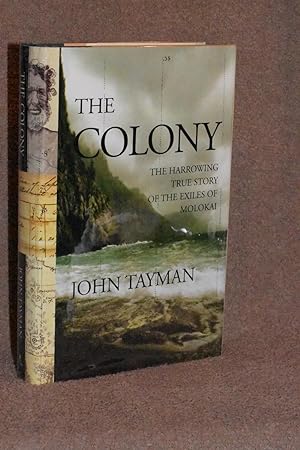In the bestselling tradition of "In the Heart of the Sea," "The Colony" reveals the untold history of the infamous American leprosy colony on Molokai and of the extraordinary people who struggled to survive under the most horrific circumstances. In 1866, twelve men and women and one small child were forced aboard a leaky schooner and cast away to a natural prison on the Hawaiian island of Molokai. Two weeks later, a dozen others were exiled, and then forty more, and then a hundred more. Tracked by bounty hunters and torn screaming from their families, the luckless were loaded into shipboard cattle stalls and abandoned in a lawless place where brutality held sway. Many did not have leprosy, and most of those who did were not contagious, yet all were caught in a shared nightmare. The colony had little food, little medicine, and very little hope. Exile continued for more than a century, the longest and deadliest instance of medical segregation in American history. Nearly nine thousand people were banished to the colony, trapped by pounding surf and armed guards and the highest sea cliffs in the world. Twenty-eight live there still. John Tayman tells the fantastic saga of this horrible and hopeful place -- at one time the most famous community in the world -- and of the individuals involved. From the very first exile -- a gentle part-time lawyer trapped in an unjust ordeal beyond his imagination -- to the last remaining residents, the narrative is peopled by presidents and kings, cruel lawmen and pioneering doctors, and brave souls who literally gave their lives to help. A stunning cast includes the martyred Father Damien, Robert Louis Stevenson, Jack London, Mark Twain, Teddy Roosevelt, John Wayne, and more. The result is a searing tale of survival and bravery, and a testament to the power of faith, compassion, and heroism.
From 1866 through 1969, the Hawaiian and American governments banished nearly 9,000 leprosy sufferers into exile on a peninsula on the Hawaiian island of Molokai. Former
Outside editor Tayman crafts a tale of fear, endurance and hope in telling the story of these unfortunate victims of ignorance (leprosy is caused by a simple bacteria and isn't nearly as contagious as was long believed). After a smallpox epidemic wiped out a fifth of the Hawaiian population in the 1850s, leprosy was seen as the next cataclysmic threat, and drastic measures were taken. For more than 100 years, anyone diagnosed with the disease was taken to the remote colony. Initially, conditions were horrible, with few services or proper medical treatment. Pushed to their limit and fueled with potent moonshine, the internees frequently rioted, causing overseers to enforce cruel laws. Later, as science and social thinking evolved, conditions improved and many in the settlement lived lives of near normalcy. Drawing on contemporary sources and eyewitness accounts of the still surviving members of the colony, Tayman has created a fitting monument to the strength and character of the castoffs in particular, and human beings as a whole. B&w photos.
Copyright © Reed Business Information, a division of Reed Elsevier Inc. All rights reserved.
Hawaii's isolation from foreign illness slowly disintegrated through the nineteenth century as trading ships arrived bearing the yellow flag of disease. When leprosy cases appeared, panicked local officials designated the island of Molokai, some fifty miles from Honolulu, a "leprosarium," because it was naturally inaccessible, presenting a sea cliff "so sheer that wild goats tumbled from its face." The first twelve lepers were rowed to its rocky shores in January of 1866. Drawing on eight thousand pages of documents, Tayman reconstructs a fascinating history of the settlement, which officially lasted until 1969. Shortages of food, water, and shelter sent some lepers into caves pocketed inside an extinct volcano. Tayman's multilayered account sketches in scientific details, such as the fact that later medical studies proved that most of the exiles weren't even contagious.
Copyright © 2006
The New Yorker*Starred Review* Drawing on letters, journals, newspaper articles, medical documents, interviews, and other source material, Tayman has crafted a gripping history of the leper colony at the Hawaiian island Molokai. In the mid-1800s, when fear of leprosy spreading throughout the islands reached a fever pitch, Dr. William Hillebrand suggested the idea of isolating those infected from the rest of society. The colony opened in 1866, and after a stint at a hospital in Honolulu, patients were rounded up and shipped out to Molokai on a regular basis. The beginning years were especially hard, as patients were thrust into the settlement with inadequate supplies and no medical care to speak of. As the colony began to grow, it garnered attention from around the world, and missionaries such as kindhearted Father Damian came to bring religious services to the patients and writers such as Robert Louis Stevenson and Jack London traveled to Molokai to chronicle the plight of the colonists. As Tayman's narrative broaches the second half of the century, the accounts become more personal, culled from interviews with elderly patients who were originally sent to Molokai as children. Tayman's crisp, flowing writing and inclusion of personal stories and details make this an utterly engrossing look at a heartbreaking chapter in Hawaiian history.
Kristine HuntleyCopyright © American Library Association. All rights reserved



